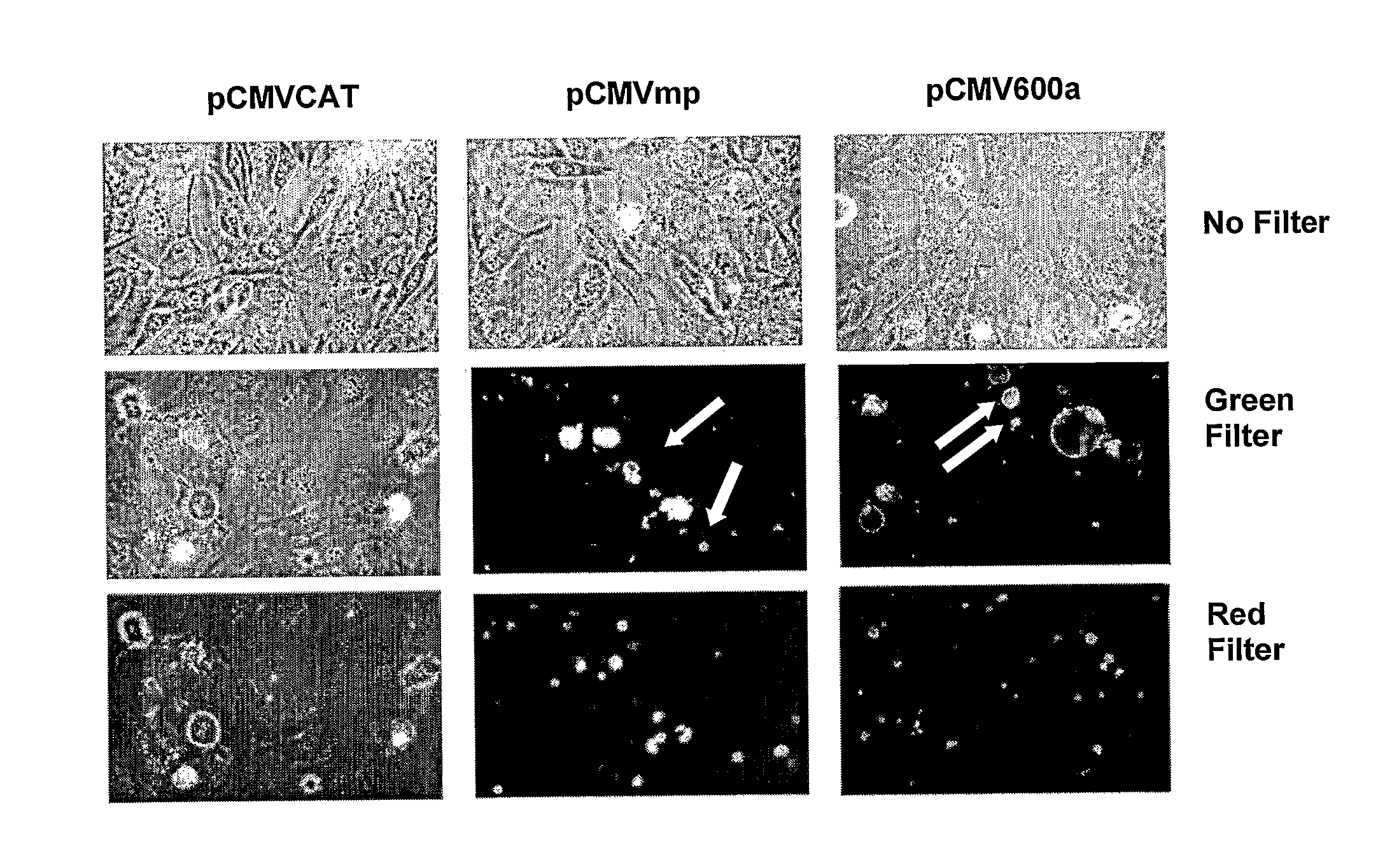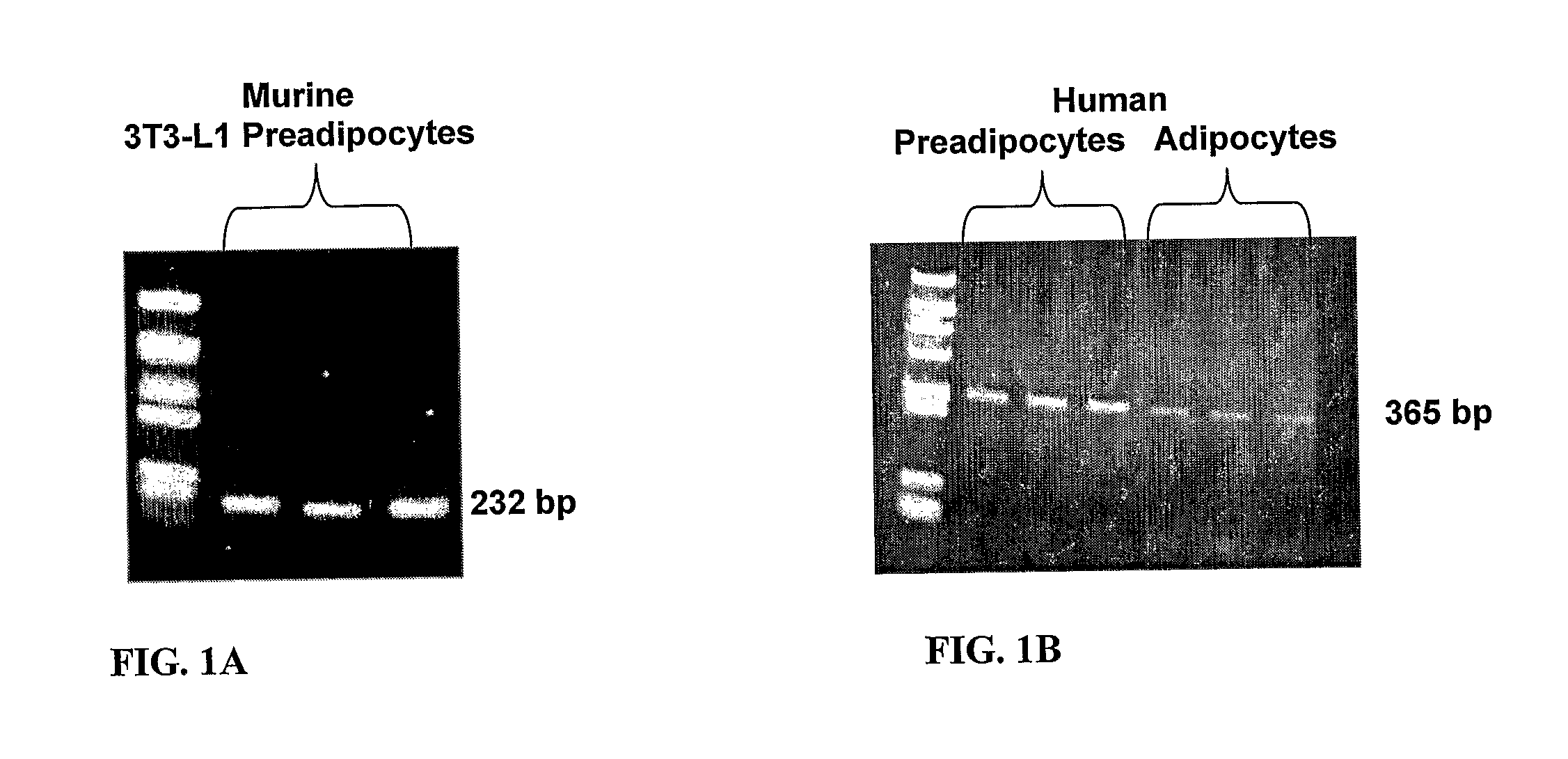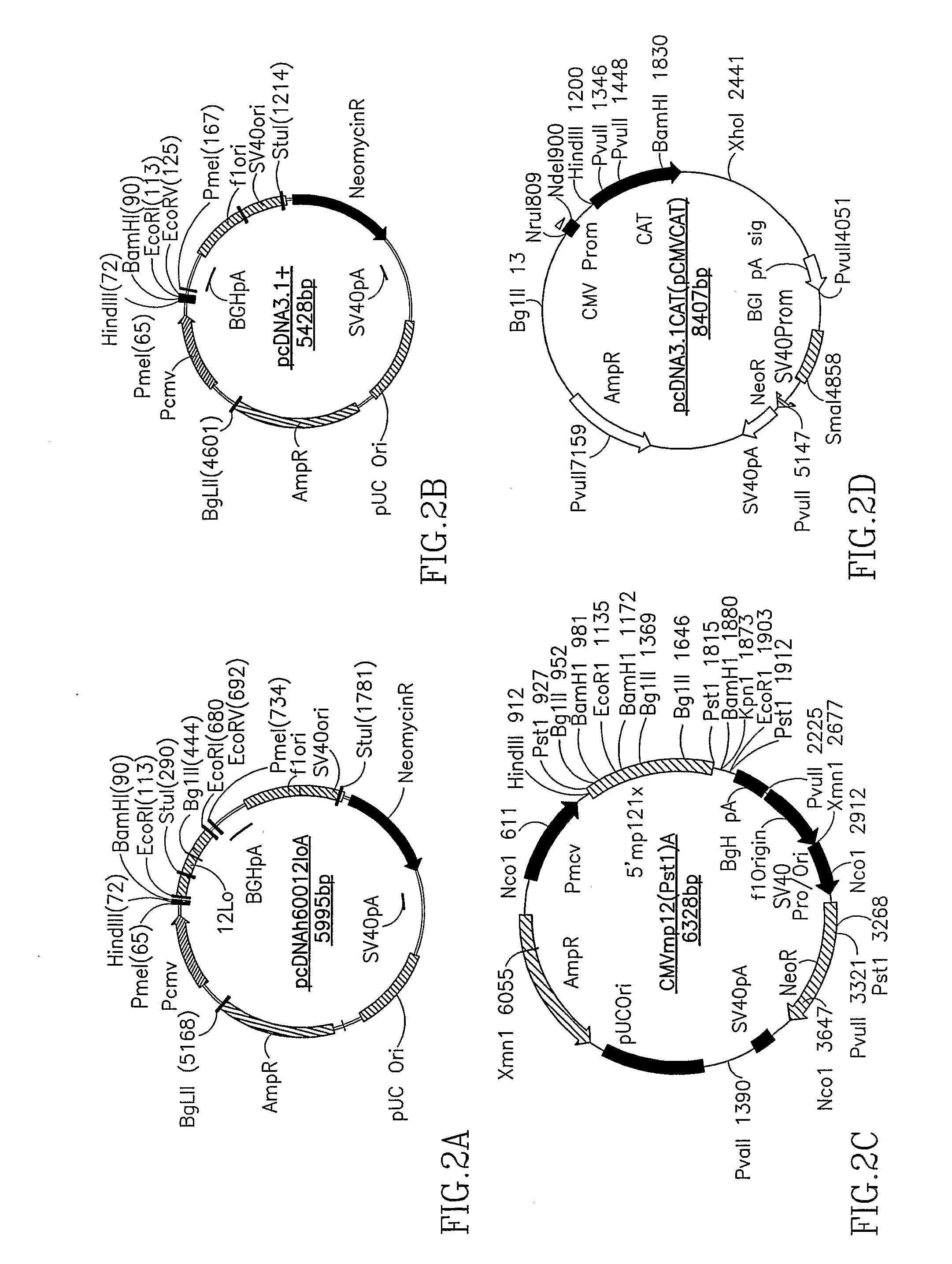Adipocyte-specific constructs and methods for inhibiting platelet-type 12 lipoxygenase expression
a technology constructs, which is applied in the field of constructs, compositions and methods for modulating the expression of platelet-type 12 lipoxygenase, can solve the problems of reduced life expectancy, increased risk of overall morbidity and mortality, and reduced life expectancy, so as to reduce fat cell mass, enhance apoptosis, and increase the incidence of fat cell apoptosis
- Summary
- Abstract
- Description
- Claims
- Application Information
AI Technical Summary
Benefits of technology
Problems solved by technology
Method used
Image
Examples
example 1
Presence of “Platelet-Type” 12-Lipoxygenase in Fat Cells
[0234]To establish whether 12-lipoxygenase is expressed in both the murine preadipocytes cell line 3T3-L1 cells and in human fat tissue, total RNA from murine 3T3-L1 preadipocyte cell line (left panel) and primary human preadipocytes and adipocytes (right panel) was prepared and subjected to PCR using primers for the appropriate species 12-lipoxygenase (mouse or human). The cDNA products were resolved on 2% E-Gels and a typical example is seen in FIG. 1.
[0235]Replicate RNA preparations show that in both human and rodent preadipocytes and human adipocytes, Platelet-type 12-Lo RNA is expressed. Interestingly it seems that there may be slightly less expressed in mature human adipocytes than in preadipocytes, but this should advantageously to be further quantitated with better quantitative methods. The murine RNA samples clearly show the band for murine platelet-type 12-lipoxygenase, and the human RNA samples show the band correspo...
example 2
Plasmids Constructed for the Constitutively Expressed Antisense Knockout of “Platelet-Type” 12-Lipoxygenase and Optimizing the Lipofection Reagent
[0236]A series of Calcium Phosphate transfections (Weisinger et al., 1988) were performed on these cells in culture to determine which constitutive promoter / enhancer unit would best function (of those tested) in the murine 3T3-L1 preadipocyte and human primary cultured preadipocytes as well as adipocytes. The following promoter / enhancer cassettes were tested in the context of the pCATBasic plasmid (Promega, Madison, Wis., USA): SV40, Raucher Sarcoma virus (RSV), CMV, Human proenkephalin (ppEnk) and the Herpes Thymidine Kinase promoter / enhancer (Weisinger et al., 1988, LaGamma et al., 1993). The CMV promoter / enhancer was the most optimal of these 5 cassettes for fat cell expression. Consequently, two CMV driven 12Lo antisense knockout plasmids (illustrated in FIG. 2) were prepared as detailed below. The controls for the future studies were ...
example 3
Antisense Knockout of 12-Lipoxygenase in 3T3-L1 cells: Transient Transfection
[0243]Cell Viability
[0244]3T3-L1 cells were subject to Fugene 6 lipofection under optimal conditions with the two 12-Lo antisense knockout plasmids described in Example 2 and one control (pcDNA3.1+ or pcDNA3.1CAT) plasmid. Two days after lipofection of the plasmids into multiple replicates of the cultures trypan blue exclusion (viability) was measured. A typical experiment is shown in FIG. 3, wherein the pCMV5′ mp12Lo(Pst1)-A plasmid is designated “pCMVmp”, the pcDNAh60012LoA plasmid is designated “pCMV600a”, and the pcDNA3.1 CAT plasmid is designated “pCMVCAT”). As transient transfection introduces the exogenous DNA into only a portion of the cells' cytoplasm, and as these plasmids are not autonomously replicating, any effect measured most probably represents a much larger effect. The results shown in FIG. 3 indicate that both 12Lo antisense knockout plasmids almost doubled the amount of dead cells 48 hour...
PUM
| Property | Measurement | Unit |
|---|---|---|
| nucleic acid sequence | aaaaa | aaaaa |
| mass | aaaaa | aaaaa |
| density | aaaaa | aaaaa |
Abstract
Description
Claims
Application Information
 Login to View More
Login to View More - R&D
- Intellectual Property
- Life Sciences
- Materials
- Tech Scout
- Unparalleled Data Quality
- Higher Quality Content
- 60% Fewer Hallucinations
Browse by: Latest US Patents, China's latest patents, Technical Efficacy Thesaurus, Application Domain, Technology Topic, Popular Technical Reports.
© 2025 PatSnap. All rights reserved.Legal|Privacy policy|Modern Slavery Act Transparency Statement|Sitemap|About US| Contact US: help@patsnap.com



